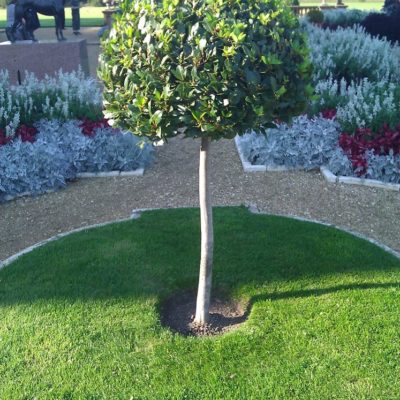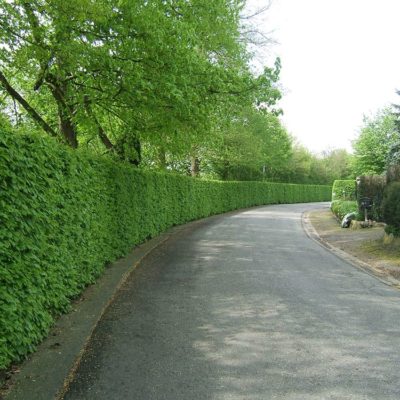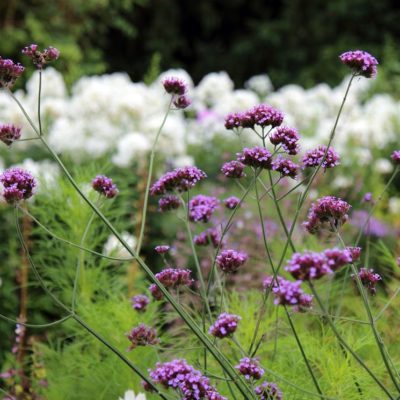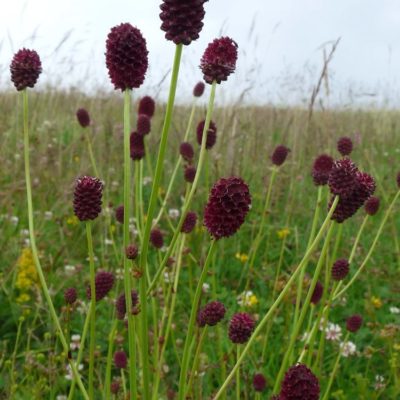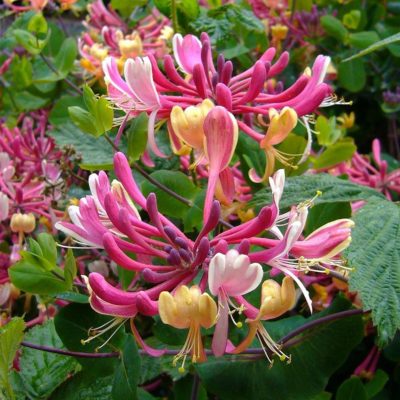Creative Ways with Plants
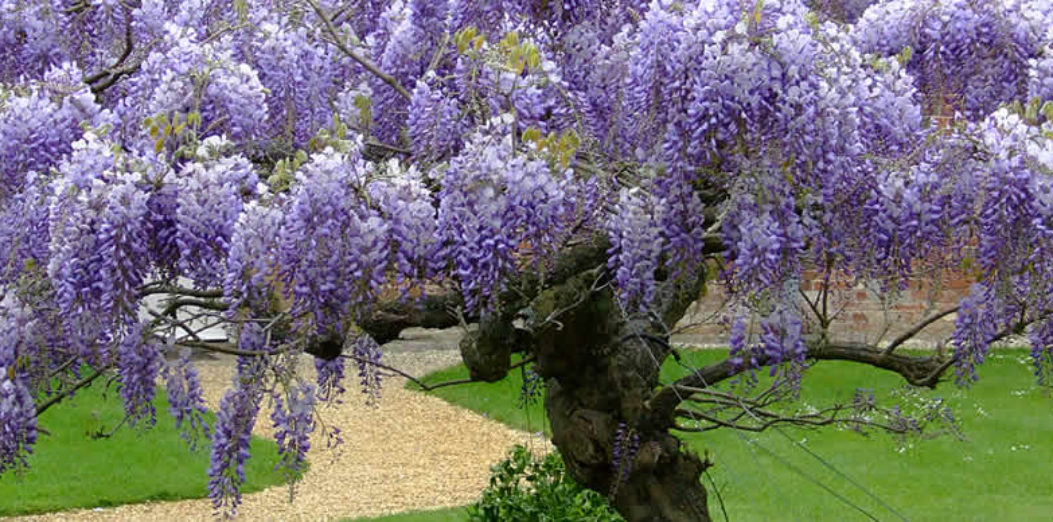
When designing a planting scheme for clients, garden designers (me included) always look to provide structure and plant interest all year – through flower colour, plant size and shape, leaf colour and texture, and more – plus some seasonal highlights – think spring bulbs, summer flowers, autumn colour, winter berries. And we might add sensory aspects like scent. We also follow good design practices like grading the height of the planting down from the back of the border to the front, and planting in groups of 3 / 5 / 7 etc.
But sometimes it pays to think a little outside of the box. Normally this is to solve a specific problem or challenge, although sometimes it is just to try to do something a little different.
Fancy turning a tree into a hedge, a shrub into a tree?
In a way, this is what happened when people started using large trees like Beech and Hornbeam as hedges, or pleaching them as ornamental screens. Or when they started training shrubs like Photinia, Portugal Laurel, Holly, Bay and Elaeagnus into lollipop-like standard small trees.
In a similar fashion, in my last blog I discussed fence training Cotoneasters and other shrubs (as espaliers, for example), rather than using climbers in narrow borders. And indeed this technique can also be used for some trees, including Hornbeam and Gleditsia.
It has to be said that using plants in ways that perhaps nature didn’t quite intend does require a bit of maintenance, mainly regular pruning, but this maintenance does not necessarily have to be onerous. In my own garden, I have planted a left over tall copper beech hedge plant, and I am planning to train it as a copper pillar towards the end of the border where it will make a lovely foliage foil for the leaf and flower colour of surrounding plants. It’s only maintenance will be an annual trim – but this will be vital maintenance as a Beech tree in my garden would be far too big!
Flexible Climbers
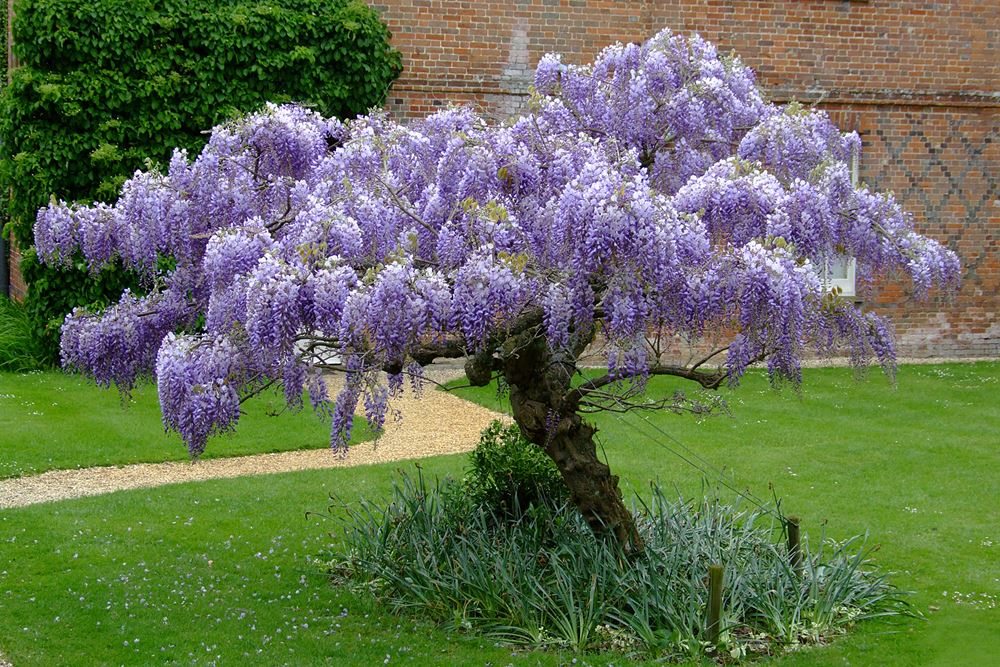
Woody climbers can also be used in very flexible ways. Wisteria, for example, can be trained as standard plants if given suitable support and trained appropriately. It does have to be said that this training is a fairly lengthy process if done from scratch. I am currently embarking on the task of training two Wisteria in this manner, and it will be a labour of love. I suspect that most clients would prefer buying plants like this ready trained!
But the end result when the plants are in flower can be truly stunning – there are some superb examples of some very old standard Wisteria trained like this at Chartwell in Kent.
Perennial Combinations
Turning to perennials, as a designer, I of course have my favourite plants, and plant combinations that I frequently use. But there are lots and lots of plants, and endless ways to combine them – and they don’t always have to be slavishly planted in groups of uneven numbers either (although this is a good rule of thumb).
I am currently trialling mixing Verbena bonariensis and Sanguisorba officinalis in an attempt to provide a tall but see through haze of subtle summer colour towards the back of a border, or in the middle of a wide border with paths either side. I’ll let you know how I get on.
But being creative with plants doesn’t require a vast plant knowledge, just a bit of lateral thinking. For example, if you have a very dry soil by a fence, then maybe, just maybe it might be worth contemplating a plant that would otherwise be too vigorous – a strong growing Honeysuckle for example – with care of course!
So next time you look at that plant at the garden centre in the shrub section, just think about all the ways you can grow it.
Image Credits: Charles Miller, Doug Orleans, Peter Van den Bossche, H.P. Brinkmann, Acabashi, Florian Grossir, 9355
